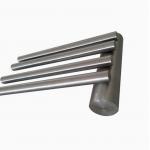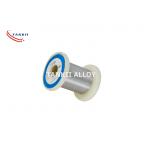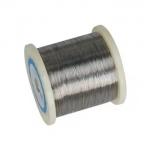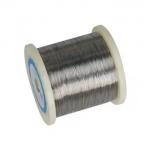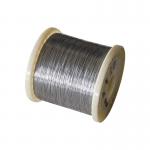Product Description
These enameled resistance wires have been broadly used for standard
resistors, automobile
parts, winding resistors, etc. using the insulation processing best
suited for these applications, taking full advantage of the
distinctive features of enamel coating.
Furthermore, we will carry out enamel coating insulation of
precious metal wire such as silver and platinum wire upon order.
Please make use of this production-on-order.
Type of bare Alloy wire
The alloy we can do enamelled are Copper-nickel alloy
wire,Constantan wire,Manganin wire. Kama Wire,NiCr Alloy
wire,FeCrAl Alloy wire etc alloy wire
Size:
Round wire:0.018mm~3.0mm
Color of enamel insulation:Red,Green,Yellow,Black,Blue,Nature etc.
Ribbon Size:0.01mm*0.2mm~1.2mm*24mm
Moq:5kg each size
Type of insulation
| Insulation-enamelled Name | Thermal LevelºC
(working time 2000h) | Code Name | GB Code | ANSI. TYPE |
| Polyurethane enamelled wire | 130 | UEW | QA | MW75C |
| Polyester enamelled wire | 155 | PEW | QZ | MW5C |
| Polyester-imide enamelled wire | 180 | EIW | QZY | MW30C |
| Polyester-imide and polyamide-imide double coated enameled wire | 200 | EIWH
(DFWF) | QZY/XY | MW35C |
| Polyamide-imide enamelled wire | 220 | AIW | QXY | MW81C |
Chemical Content, %
| Ni | Mn | Fe | Si | Cu | Other | ROHS Directive |
| Cd | Pb | Hg | Cr |
| 2~3 | 11~13 | 0.5(max) | micro | Bal | - | ND | ND | ND | ND |
Mechanical Properties
| Max Continuous Service Temp | 0-45ºC |
| Resisivity at 20ºC | 0.47±0.03ohm mm2/m |
| Density | 8.44 g/cm3 |
| Thermal Conductivity | -3~+20KJ/m·h·ºC |
| Temp Coefficient of Resistance at 20 ºC | -2~+2α×10-6/ºC(Class0) |
| -3~+5α×10-6/ºC(Class1) |
| -5~+10α×10-6/ºC(Class2) |
| Melting Point | 1450ºC |
| Tensile Strength(Hard) | 635 Mpa(min) |
| Tensile Strength,N/mm2 Annealed,Soft | 340~535 |
| Elongation | 15%(min) |
| EMF vs Cu, μV/ºC (0~100ºC) | 1 |
| Micrographic Structure | austenite |
| Magnetic Property | non |
| Micrographic Structure | Ferrite |
| Magnetic Property | Magnetic |
Application of Manganin
Manganin foil and wire is used in the manufacture of resistor,
Particularly ammeter shunt, because of its virtually zero
temperature coefficient of resistance value and long term
stability.

